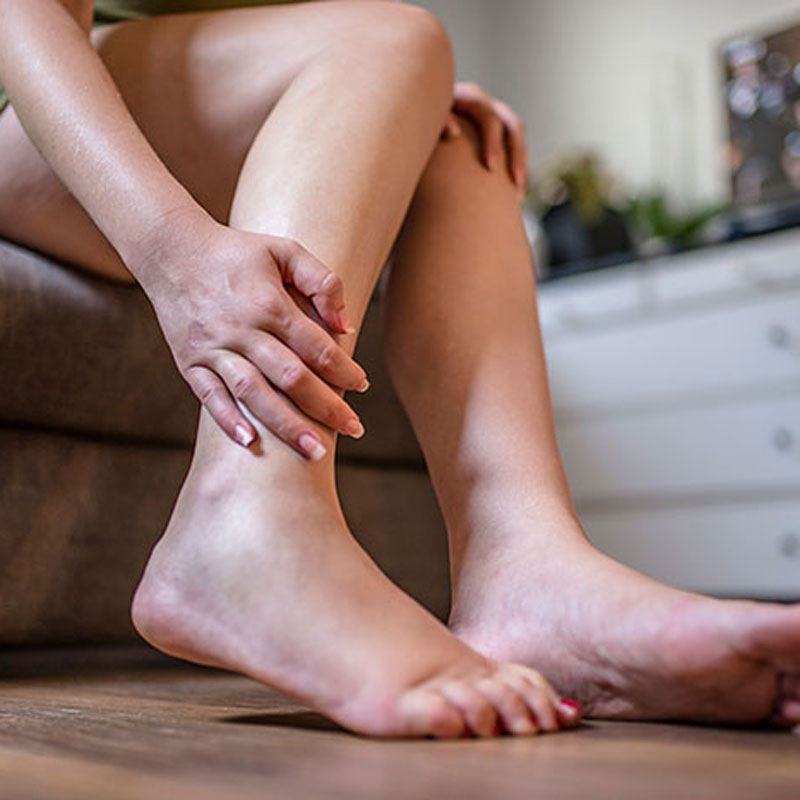Varicose Veins
Varicose Vein Symptoms & Treatment in Houston Causes & Treatment
Venous insufficiency is a common but often misunderstood condition that can not only cause the development of unsightly varicose veins and spider veins but also lead to significant discomfort. Any vein in the body can become a varicose vein, but varicose veins commonly occur on the legs and feet. The veins in these parts of the body are under increased pressure because they push blood back to the heart against the force of gravity. Over time, this force weakens valves within the vein and cause blood to pool. Through this process, varicose veins bulge outward and become visible beneath the skin, often appearing in twisted, gnarled patterns.

What Are the Common Symptoms of Varicose Veins?
Whether or not you have symptoms beyond visible varicose veins, it is best to see a doctor at the first sight of varicose veins for an accurate diagnosis. Using diagnostic ultrasound imaging, a vein specialist can see how the veins in your legs are functioning to pinpoint weakened areas that are causing blood to pool. If you notice any of the signs or symptoms below, you should not hesitate to see a doctor:
- Leg cramping
- Itching
- Burning
- Swelling
- Numbness
- Restless leg syndrome
- Aching
- Leg Heaviness
- Leg Fatigue
What Causes Varicose Veins?
Varicose veins may simply be caused by pressure on the veins, which can increase in individuals who are overweight, older adults, and those who spend lots of time on their feet. Women are also more likely to experience varicose veins, especially during pregnancy. In other cases, varicose veins might be related to a more serious circulatory problem called chronic venous insufficiency, which occurs when the veins are unable to pump enough blood back to the heart. Unlike simple varicose veins caused by lifestyle factors, chronic venous insufficiency can affect deep veins and perforating veins rather than just superficial veins.

Varicose Vein Treatment
There are numerous treatment options available to treat varicose veins, ranging from conservative solutions designed to minimize symptoms to interventional treatments that physically eliminate or remove the problematic vein. In many cases, conservative therapies are exhausted first before medical intervention is attempted.
- Conservative treatments for varicose veins are aimed at improving quality of life by eliminating the symptoms and causes of varicose veins. These treatments include over-the-counter pain relief medications, homeopathic remedies, and medical-grade compression stockings, as well as lifestyle changes such as weight loss and exercise.
- If conservative treatments fail to address your symptoms adequately, interventional treatments will be pursued. These treatments are minimally invasive and include endovenous thermal and non-thermal ablations, ambulatory phlebectomy, and sclerotherapy.
Interventional Varicose Veins Treatment
Interventional vein treatment aims to eliminate the cause of your varicose veins symptoms by treating the vein directly. Speak with our vein specialists to get more information.
This is a procedure during which a thin, flexible tube, called a catheter, is inserted into the diseased vein. As the catheter is withdrawn, an instrument at the end uses radiofrequency energy (heat) to seal the vein shut. The body will naturally reroute blood through different veins, while the sealed vein will slowly shrink until it is reabsorbed.
Is a minimally invasive surgical procedure that removes the damaged portion of the vein via several small incisions. This treatment can be performed under local anesthesia and does not require stitches due to the small incision size.
Involves the injection of a specialized chemical solution into the problematic varicose vein. These chemicals cause irritation to the vein walls that cause scarring. Eventually, the vein will close off and the body will reabsorb it, eliminating problematic vein. Several sclerotherapy sessions may be required to treat large or multiple veins often spaced four to six weeks apart.
Newer therapies have evolved including the Venaseal procedure and Varithena. These techniques do not use heat to seal the vein, but rather use a glue (Venaseal) or medication (Varithena) to close the damaged vein. Talk to your vein doctor to determine if you are a candidate for these procedures.
